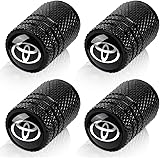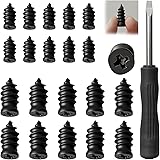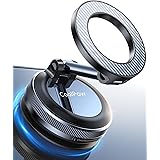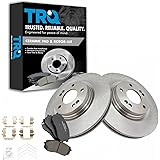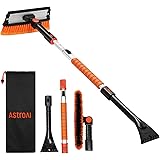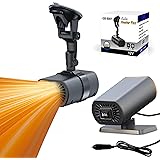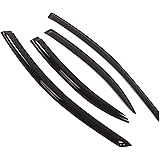Table of Contents
Do you know how important it is to keep the right transmission fluid level in your car?
The fluid helps the gears move smoothly and keeps the engine cool. It’s key to know the correct transmission fluid capacity for your Nissan Frontier. This ensures it runs well and lasts longer.
Choosing the right transmission fluid type and amount is vital. It helps avoid damage and makes driving smooth.
Key Takeaways
- Understanding the importance of transmission fluid in vehicle performance
- Knowing the correct transmission fluid capacity for your Nissan Frontier
- Identifying the right transmission fluid type for optimal performance
- Preventing damage and ensuring a smooth driving experience
- Maintaining the correct transmission fluid level for longevity
Understanding Nissan Frontier Transmission Fluid Capacity What it is and Guide
Knowing how much transmission fluid your Nissan Frontier needs is key to keeping it running well. This fluid is vital for the smooth operation of the vehicle’s transmission system.
The Importance of Proper Transmission Fluid Levels
It’s important to keep the right amount of transmission fluid in your vehicle. Transmission fluid does many things. It helps move power from the engine, makes gear changes smooth, lubricates parts, and keeps the system cool.
How Transmission Fluid Protects Your Transmission
The fluid keeps your transmission safe by reducing friction and preventing wear. It also helps control temperature. This extends the life of your transmission and makes shifting gears smooth.
Consequences of Incorrect Fluid Levels
Too little or too much transmission fluid can cause big problems. You might see slipping or hesitation when shifting, overheating, or even transmission failure. Keeping the right fluid level is key to avoiding these issues.
How Transmission Fluid Capacity Affects Vehicle Performance
The amount of transmission fluid affects how well your Nissan Frontier performs. The right amount ensures the transmission works smoothly. This means better power delivery and fuel efficiency. Too little fluid can lead to poor performance and harm the transmission.
By knowing and keeping the right transmission fluid level, your Nissan Frontier will run its best. You’ll enjoy a smooth and efficient drive.
Nissan Frontier Transmission Types and Their Fluid Requirements
The Nissan Frontier comes with different transmission types. Each type needs its own fluid to keep your car running well. Knowing this helps keep your vehicle in top shape.
Automatic Transmission Specifications
Nissan Frontier models with automatic transmissions need specific fluids. The most common ones are the RE4R01A, RE5R05A, and 7-speed automatic transmissions.
RE4R01A, RE5R05A, and 7-Speed Automatic Transmissions
The RE4R01A and RE5R05A transmissions are known for their reliability and performance. The 7-speed automatic offers smooth shifts and better fuel economy. Nissan suggests using genuine Nissan Matic S ATF for these. You’ll need between 8 to 10 quarts for a full flush.
9-Speed Automatic Transmission (2022+ Models)
Models from 2022 and later have a 9-speed automatic transmission. It needs Nissan Matic S ATF or similar fluids. This transmission boosts performance and fuel efficiency. It holds about 9-11 quarts of fluid.
Manual Transmission Specifications
Nissan Frontier models with manual transmissions also have specific fluid needs. The most common are the 5-speed and 6-speed manual transmissions.
5-Speed and 6-Speed Manual Transmissions
For the 5-speed and 6-speed manual transmissions, Nissan recommends GL-4 or GL-5 gear oil. You’ll need about 2-3 quarts, depending on the model and whether it’s 2WD or 4WD.
Special Considerations for 4WD Models
4WD models might need different fluids because of the transfer case and rear differential. Always check your owner’s manual or talk to a dealership for the right info. Usually, 4WD models need extra fluid for these parts.
Nissan Frontier Transmission Fluid Capacity by Model Year
To keep your Nissan Frontier running well, it’s key to use the right amount of transmission fluid. The amount needed changes with each model year. Knowing this helps keep your car in top shape.
First Generation (1997-2004) Capacity Specifications
The first Nissan Frontier, made from 1997 to 2004, needs a specific amount of transmission fluid. Automatics need about 7.5 quarts, while manuals use 2.5 quarts. Always check your owner’s manual for the exact amount for your car.
Second Generation (2005-2021) Capacity Specifications
The second generation, from 2005 to 2021, had newer transmission tech. Automatics need around 9.5 quarts, and manuals use 2.6 quarts. Make sure to check your car’s manual or a reliable guide for the right amount.
Third Generation (2022-Present) Capacity Specifications
The 2022 and newer Nissan Frontier has even more advanced transmissions. Automatics need about 10 quarts, and manuals use 2.7 quarts. For the most accurate info, check your owner’s manual or talk to a mechanic.
Using the right amount of transmission fluid is very important. It helps your car run smoothly, saves fuel, and lasts longer.
Recommended Transmission Fluid Types for Nissan Frontier
Choosing the right transmission fluid for your Nissan Frontier is key. It keeps the transmission running smoothly and prevents wear. This helps your vehicle last longer.
OEM Nissan Transmission Fluid Specifications
Nissan suggests using OEM transmission fluid for their cars. This ensures the transmission works best and lasts longer.
Matic-D, Matic-J, Matic-K, and Matic-S Fluids
Nissan has different transmission fluids for different models and years. These include Matic-D, Matic-J, Matic-K, and Matic-S. Each is made for specific needs.
- Matic-D: For older models, it’s made for certain transmissions.
- Matic-J: It’s for certain automatics, offering better lubrication.
- Matic-K: A newer option, it boosts performance and protection.
- Matic-S: The newest, it’s for modern transmissions.
Manual Transmission Fluid Requirements
Manual transmissions need specific fluids. Using the right one keeps the transmission working well.
Compatible Aftermarket Alternatives
While OEM fluid is best, some aftermarket options work too. They must meet or exceed Nissan’s standards.
Recommended Brands and Specifications
Many aftermarket brands offer fluids that fit Nissan Frontier needs. Look for ones that meet or exceed Nissan’s standards.
- Brand A: Offers fluids for many Nissan models.
- Brand B: Provides fluids for heavy-duty use.
What to Avoid When Selecting Transmission Fluid
Don’t pick fluids that don’t meet Nissan’s specs. The wrong fluid can damage your transmission and affect its performance.
How to Check Nissan Frontier Transmission Fluid Level
Checking the transmission fluid level in your Nissan Frontier is key to keeping your car running well. It helps spot problems early on. This way, you can avoid big issues later.
Locating the Transmission Fluid Dipstick
To start, find the transmission fluid dipstick. It’s under the hood, but its spot can change with your car’s model year. Check your owner’s manual for where it is.
Step-by-Step Checking Procedure
Here’s how to check the transmission fluid level:
- Make sure your car is parked on a flat surface.
- Lock the parking brake.
- Start the engine and let it run for a few minutes.
- Find the transmission fluid dipstick, pull it out, and clean it with a cloth.
- Put the dipstick back in and pull it out again for a correct reading.
Cold vs. Hot Check Methods
The manual will tell you when to check the fluid. It might be when the engine is cold or hot. A hot check is after driving, and a cold check is when the engine is cool.
Reading the Dipstick Accurately
When you pull out the dipstick, look for the marks. The fluid level should be between them. Make sure to check the level against what your manual says.
Interpreting Fluid Condition and Level
It’s not just about the level; the fluid’s condition matters too. The color and consistency should match what your manual says.
Color, Smell, and Texture Indicators
If the fluid is dark or smells burnt, it’s time for a change. Good transmission fluid is light brown or pink and smooth.
When to Take Action Based on Fluid Condition
If the fluid is low, add the right type. If it’s bad, you might need to change it. Always check your manual or talk to a mechanic for advice.
Complete Guide to Changing Nissan Frontier Transmission Fluid
Changing the transmission fluid in your Nissan Frontier is key to keeping your vehicle running well. It helps keep the transmission parts lubricated and prevents overheating. It also removes harmful contaminants.
Tools and Materials Required
Before starting, make sure you have the right tools and materials. You’ll need a socket wrench, a drain pan, new transmission fluid, and a replacement filter if your model has one.
Required Tools and Materials:
- Socket wrench or ratchet
- Drain pan
- OEM-approved transmission fluid
- Replacement transmission filter (if applicable)
Drain and Fill Method
The drain and fill method is a common way to change transmission fluid. It involves draining the old fluid and adding new one.
Step-by-Step Process
To do a drain and fill, first find the transmission pan. Remove the bolts holding it in place. Be ready for the fluid to drain fast. After removing the pan, check for debris and clean it well before putting it back.
Drain and Fill Steps:
- Locate the transmission pan and remove the holding bolts.
- Drain the old fluid into a pan.
- Inspect and clean the transmission pan.
- Reinstall the pan and fill with new transmission fluid.
Tips for Proper Fill Measurement
It’s important to add the right amount of fluid. Too much or too little can cause problems. Check your owner’s manual or a repair manual for the correct amount.
| Model Year | Transmission Type | Fluid Capacity |
|---|---|---|
| 1997-2004 | Automatic | 9.5 quarts |
| 2005-2021 | Automatic | 10.2 quarts |
| 2022-Present | Automatic | 10.5 quarts |
Transmission Flush Procedure
A transmission flush is a deeper clean that uses a cleaning solution. It circulates through the transmission to remove contaminants.
When a Flush is Necessary vs. Drain and Fill
You should do a flush if the fluid is heavily contaminated. For regular maintenance, a drain and fill is usually enough.
Professional Equipment Requirements
For a transmission flush, you need special equipment. This is usually found at professional repair shops.
Nissan Frontier Transmission Fluid Maintenance Schedule
To keep your Nissan Frontier running smoothly, following a proper transmission fluid maintenance schedule is key. The fluid is crucial for the vehicle’s performance and longevity. Regular maintenance helps prevent potential issues.
Factory Recommended Service Intervals
The owner’s manual for your Nissan Frontier outlines the factory-recommended service intervals. These guidelines ensure your vehicle runs at its best under normal driving conditions.
Normal Driving Conditions Schedule
For normal driving, the recommended transmission fluid service interval is between 30,000 to 60,000 miles. This range varies by model year and specific conditions. Always check your owner’s manual for the exact recommendation for your vehicle.
Changes in Recommendations Across Model Years
Nissan has updated its transmission fluid service interval recommendations over the years. Older models might need more frequent service than newer models. This is due to advancements in transmission fluid formulations.
Extended Service Recommendations for Severe Conditions
Driving your Nissan Frontier under severe conditions requires more frequent transmission fluid maintenance. It’s important to understand what qualifies as “severe” driving. Adjusting your maintenance schedule based on this is crucial.
What Qualifies as “Severe” Driving
Severe driving conditions include extreme temperatures, towing, or frequent stop-and-go traffic. If you drive under these conditions often, you should change your transmission fluid more frequently.
Adjusted Maintenance Intervals
For severe driving conditions, Nissan suggests reducing the service interval by up to 50%. For example, if the normal interval is 60,000 miles, it might be 30,000 miles under severe conditions.
| Driving Conditions | Recommended Service Interval |
|---|---|
| Normal | 30,000 – 60,000 miles |
| Severe | 15,000 – 30,000 miles |
Signs of Low or Degraded Transmission Fluid in Nissan Frontier
Knowing the signs of low or degraded transmission fluid is key to avoiding serious damage to your Nissan Frontier’s transmission. This fluid is vital for the smooth operation of your vehicle’s transmission system. It affects both how well your car performs and how long it lasts.
Performance Symptoms
Low or degraded transmission fluid can cause many performance issues. These problems can really affect your driving experience. It’s important to fix these issues quickly.
Shifting Problems and Delays
Shifting problems and delays are common signs of low or degraded transmission fluid. If your Nissan Frontier hesitates or has trouble shifting gears, it might need more fluid. This could be because the fluid level is low or the fluid is no longer effective.
Power Loss and Overheating
Low or degraded transmission fluid can also cause power loss and overheating. Without the right lubrication, the transmission can overheat. This can greatly reduce your car’s performance and even damage it more if not fixed.
Visual and Auditory Warning Signs
There are also visual and auditory signs that show transmission fluid problems. Knowing these signs can help you catch issues early.
Unusual Noises and Vibrations
Unusual noises and vibrations often mean there’s a problem with the transmission fluid. Sounds like grinding, whining, or clunking, along with vibrations, can indicate low or degraded fluid. It’s important to check these symptoms to avoid more damage.
Dashboard Warning Indicators
Modern cars, like the Nissan Frontier, have advanced warning systems. Dashboard warning indicators for the transmission or temperature can signal fluid issues. Always refer to your car’s manual or a mechanic to understand these warnings.
Spotting these signs and acting fast can keep your Nissan Frontier running well and its transmission lasting longer. Regular checks and maintenance of the transmission fluid are essential for your car’s health.
Transmission Fluid Capacity Charts for All Nissan Frontier Models
The Nissan Frontier’s transmission fluid needs change with each model and drivetrain. Knowing the right amount for your car is key to keeping it running well and lasting long.
2WD Models Capacity Specifications
Nissan Frontier 2WD models have different fluid needs based on their engine.
4-Cylinder Engine Models
For 2WD models with a 4-cylinder engine, you’ll need about 8.5 quarts of fluid for automatic transmissions.
- Model Years 1997-2004: 8.3 quarts
- Model Years 2005-2021: 8.5 quarts
- Model Years 2022-Present: 8.7 quarts
6-Cylinder Engine Models
For 2WD models with a 6-cylinder engine, you’ll need about 9.5 quarts of fluid for automatic transmissions.
- Model Years 1997-2004: 9.3 quarts
- Model Years 2005-2021: 9.5 quarts
- Model Years 2022-Present: 9.7 quarts
4WD Models Capacity Specifications
Nissan Frontier 4WD models also have different fluid needs based on their engine.
4-Cylinder Engine Models
For 4WD models with a 4-cylinder engine, you’ll need about 8.8 quarts of fluid for automatic transmissions.
- Model Years 1997-2004: 8.5 quarts
- Model Years 2005-2021: 8.8 quarts
- Model Years 2022-Present: 9.0 quarts
6-Cylinder Engine Models
For 4WD models with a 6-cylinder engine, you’ll need about 9.8 quarts of fluid for automatic transmissions.
- Model Years 1997-2004: 9.5 quarts
- Model Years 2005-2021: 9.8 quarts
- Model Years 2022-Present: 10.0 quarts
Always check your owner’s manual or talk to a Nissan dealership to find out the exact fluid needs for your car. Specs can vary.
Common Transmission Fluid Issues in Nissan Frontier and Solutions
The Nissan Frontier can face problems with its transmission fluid, like leaks and contamination. These issues can hurt the car’s performance and lifespan if not fixed quickly.
Leaks and Their Causes
Leaks in the transmission fluid are common in Nissan Frontier models. They can happen for many reasons, like old seals, damaged pans, or broken lines.
Common Leak Points and Identification
Finding where a leak is coming from is key to fixing it. Leaks often show up at the transmission pan gasket, around the output shaft, or in the cooler lines. A detailed check is needed to find the exact leak spot.
Repair Options and Costs
Fixing transmission fluid leaks can cost differently based on the leak’s size and where it is. For small leaks, just replacing a seal or tightening might work. But bigger leaks might need a new pan or lines. Costs can be from $100 to $1,000 or more, depending on the job.
| Leak Location | Repair Cost | Complexity |
|---|---|---|
| Transmission Pan Gasket | $200-$500 | Moderate |
| Output Shaft Seal | $150-$300 | Low |
| Transmission Cooler Lines | $300-$600 | High |
Contamination and Overheating Problems
Contamination and overheating are big problems for Nissan Frontier’s transmission fluid system. Dirty fluid can wear out parts early, and too much heat can break down the fluid.
Causes of Fluid Contamination
Fluid can get dirty from dirt, debris, or old parts in the transmission. Regular checks and fluid changes help keep it clean.
Preventing and Addressing Overheating
To avoid overheating, make sure the fluid levels are right, use the right fluid, and keep the cooler in good shape. If it overheats, check the fluid, inspect the cooler, and might need to flush the system.
“Regular maintenance is key to preventing transmission fluid issues. By staying on top of fluid checks and changes, Nissan Frontier owners can significantly extend the life of their vehicle’s transmission.”
Transmission Fluid’s Role in Nissan Frontier Performance and Longevity
Transmission fluid is key to your Nissan Frontier’s performance and life. Keeping the right fluid level and quality is crucial. It ensures your vehicle runs well and lasts longer.
How Proper Fluid Maintenance Extends Transmission Life
Keeping transmission fluid in check is vital for your Nissan Frontier’s transmission. Regular checks and fluid changes keep it clean and at the right level.
Lubrication and Cooling Functions
The fluid does two main things: it lubricates and cools. It reduces friction and wear in the transmission. It also prevents overheating.
Long-term Cost Benefits of Regular Maintenance
Regular fluid maintenance saves money in the long run. It prevents wear and overheating. This avoids expensive repairs and extends your transmission’s life.
Performance Benefits of Fresh Transmission Fluid
Fresh fluid boosts your Nissan Frontier’s performance. It ensures smooth shifting and can improve fuel efficiency.
Improved Shifting and Responsiveness
Clean transmission fluid makes your Frontier shift better and respond faster. This makes driving smoother and more fun.
Fuel Efficiency Considerations
Also, fresh fluid can save on fuel costs. A well-lubricated transmission runs more efficiently. This can lead to long-term fuel savings.
| Maintenance Activity | Benefits |
|---|---|
| Regular Fluid Checks | Early detection of potential issues |
| Transmission Fluid Changes | Prevents wear and tear, reduces risk of overheating |
| Using OEM Fluid | Ensures compatibility and optimal performance |
Professional vs. DIY Transmission Fluid Service for Nissan Frontier
Nissan Frontier owners face a big decision: should they get professional or DIY transmission fluid service? This choice depends on cost, convenience, and service quality.

Cost Comparison
The price for Nissan Frontier transmission fluid service differs a lot between professional and DIY options. Knowing these prices helps you decide better.
Dealer Service Pricing
Dealerships charge more for professional service because of their expertise and OEM parts. For a Nissan Frontier, expect to pay between $200 and $500, based on the model year and service needed.
Independent Shop vs. DIY Expenses
Independent shops might be cheaper, with prices from $100 to $300. DIY service is even more affordable, with the main cost being the transmission fluid. This can cost between $50 and $150, depending on quality and amount needed.
Pros and Cons of Each Approach
Both professional and DIY services have their good and bad sides. Professional service means you get skilled technicians and a job done right, but it’s pricier. DIY service is cheaper but requires mechanical knowledge and the right tools.
When to Choose Professional Service
Go for professional service if you’re not handy or want peace of mind. It’s also wise for newer vehicles or those with high mileage, even if they’re no longer under warranty.
When DIY Makes More Sense
DIY service is best for those who enjoy doing car maintenance themselves. It saves money and lets you keep an eye on your transmission’s health.
Conclusion
Keeping your Nissan Frontier’s transmission fluid in check is key. This guide has shown why knowing nissan frontier transmission fluid capacity is important. It helps keep your vehicle running well.
By following the maintenance tips we’ve shared, your Nissan Frontier will run smoothly. Regular checks and maintenance of the transmission fluid can save you money. It also helps your vehicle’s transmission last longer.
In conclusion, taking care of your Nissan Frontier’s transmission fluid is crucial. It ensures your vehicle performs well and avoids future problems.


